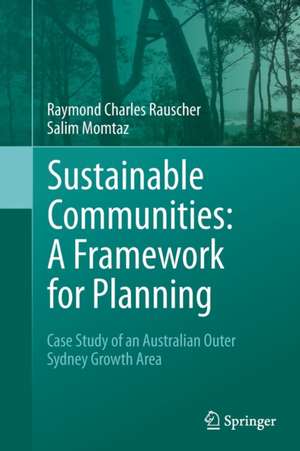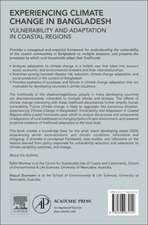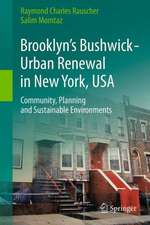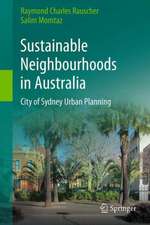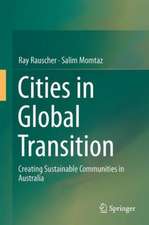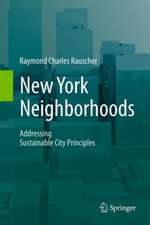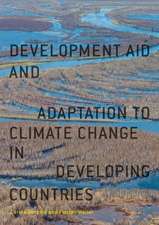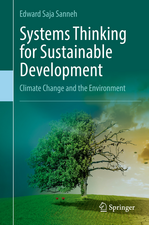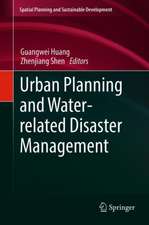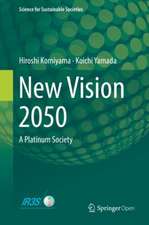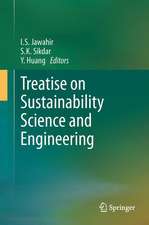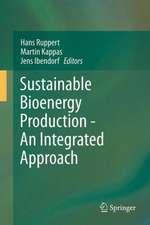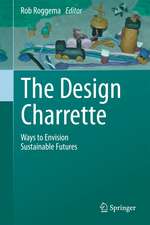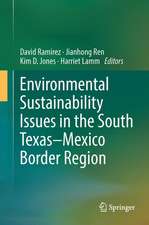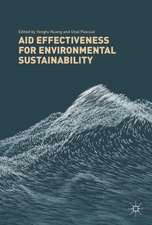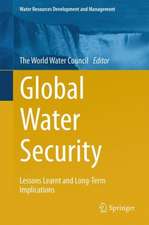Sustainable Communities: A Framework for Planning: Case Study of an Australian Outer Sydney Growth Area
Autor Raymond Charles Rauscher, Salim Momtazen Limba Engleză Paperback – 23 aug 2016
| Toate formatele și edițiile | Preț | Express |
|---|---|---|
| Paperback (1) | 633.19 lei 43-57 zile | |
| SPRINGER NETHERLANDS – 23 aug 2016 | 633.19 lei 43-57 zile | |
| Hardback (1) | 639.41 lei 43-57 zile | |
| SPRINGER NETHERLANDS – 23 oct 2013 | 639.41 lei 43-57 zile |
Preț: 633.19 lei
Preț vechi: 744.93 lei
-15% Nou
Puncte Express: 950
Preț estimativ în valută:
121.16€ • 126.84$ • 100.25£
121.16€ • 126.84$ • 100.25£
Carte tipărită la comandă
Livrare economică 07-21 aprilie
Preluare comenzi: 021 569.72.76
Specificații
ISBN-13: 9789402402568
ISBN-10: 940240256X
Pagini: 128
Ilustrații: XX, 128 p. 39 illus., 33 illus. in color.
Dimensiuni: 155 x 235 x 8 mm
Greutate: 0.22 kg
Ediția:Softcover reprint of the original 1st ed. 2014
Editura: SPRINGER NETHERLANDS
Colecția Springer
Locul publicării:Dordrecht, Netherlands
ISBN-10: 940240256X
Pagini: 128
Ilustrații: XX, 128 p. 39 illus., 33 illus. in color.
Dimensiuni: 155 x 235 x 8 mm
Greutate: 0.22 kg
Ediția:Softcover reprint of the original 1st ed. 2014
Editura: SPRINGER NETHERLANDS
Colecția Springer
Locul publicării:Dordrecht, Netherlands
Cuprins
Chapter 1: Introduction to sustainability.- 1.1 Abstract.- 1.2 Introducing Sustainability Terms.- Chapter 2: Sustainability and Urban Planning.- 2.1: Abstract.- 2.2: Sustainability and ESD.- 2.3: ESD Related Documents.- 2.3.1 International.- 2.3.2 International Non-government Organisations (NGOs).- 2.3.3 Commonwealth.- 2.3.4 New South Wales.- 2.4: ESD Based Urban Planning Frameworks.- 2.4.1 Land Use Planning.- 2.4.2 Natural Resource Planning.- 2.4.3 Sustainable Urban Planning.- Chapter 3: sustainable communities framework (SCF).- 3.1: Abstract.- 3.2: SCF Structure.- Chapter 4: Data sources and indicators of sustainability.- 4.1: Abstract.- 4.2: Searching data sources.- 4.3: Indicators of Sustainability.- Chapter 5: Examining study area.- 5.1: Abstract.- 5.2: Background to Study Area.- 5.3: Study Area and Planning.- Chapter 6: Applying the framework to the natural environment.- 6.1: Abstract.- 6.2: Step 1 – Review ESD Related Documents.- 6.3: Step 2 – Selecting Indicators of Sustainability.- 6.4: Step 3 – Area Survey.- 6.5 Steps 4 and 5 – Complete Sustainability Score Cards and Sustainability Reports.- 6.6 Aggregating Sustainability Score Cards.- Chapter 7: Applying the framework to the built environment.- 7.1: Abstract.- 7.2: Step 1 – Review ESD Related Documents.- 7.3: Step 2 – Selecting Indicators of Sustainability.- 7.4: Step 3 – Survey Area.- 7.5: Step 4 – Completing a Sustainability Score Card.- 7.6: Step 5 – Adopting Sustainability Report.- 7.7 Aggregating Sustainability Score Cards.- Chapter 8: Future applications of sCF.- 8.1: Abstract.- 8.2: Overview of SCF Applications.- 8.3: Research to Expand SCF applications.- Appendices.- Appendix A: ESD principles built into eco-village design.- Appendix B: Sustainable urban planning web sites.- Glossary.- Index.
Textul de pe ultima copertă
This book is in part a response to the attempts of governments to address increasing concerns over such environmental issues as the impact of climate change; carbon emissions; pressures from overpopulation of cities; coal seam gas extraction and depleting natural resources. The authors have developed a Sustainable Communities Framework (SCF) which incorporates social-cultural, environmental and economic sustainability principles in the process of urban planning. The authors propose a five-step SCF built on an application of sustainability tables. The book examines a wide range of urban planning practices utilizing sustainability criteria, outlining both qualitative and quantitative tools. Separate chapters discuss application of the SCF to both the natural environment and the built environment. This framework is applied to a case study of the outer Sydney growth area of Wyong Shire, Central Coast, NSW, Australia. Addressing the question of how best to measure the environment, the authors present a table for selecting indicators of sustainability, and outline sustainability scorecards which use color-coded ratings of green, red and amber to measure indicators of sustainability. The authors show how aggregating these ratings allows the framework to be scaled up for application to larger areas. Finally, the authors show how scorecards can be incorporated in sustainability reports, with actions and monitoring components. The authors also examine urban planning education including land use planning, natural resource planning and sustainable urban planning, focusing on the extent to which schools incorporate principles of sustainability. The authors offer their critique on the movement of planning practices towards a more coordinated and holistic framework, in incorporating sustainability principles. Sustainable Communities: A Framework for Planning concludes by drawing a future scenario on the application of the SCF to incorporate principles of sustainability intourban planning. The authors propose future options for SCF applications, including adopting a systems program; environmental performance monitoring and showing how the framework will accommodate the social-cultural and economic components of sustainability, in addition to the environmental ones as examined in the case study.
Caracteristici
Offers the latest interpretation of sustainable urban planning and ecologically sustainable development (ESD) Provides planning tools for measuring the sustainability of urban and regional areas Demonstrates a hands-on approach for achieving sustainable communities
